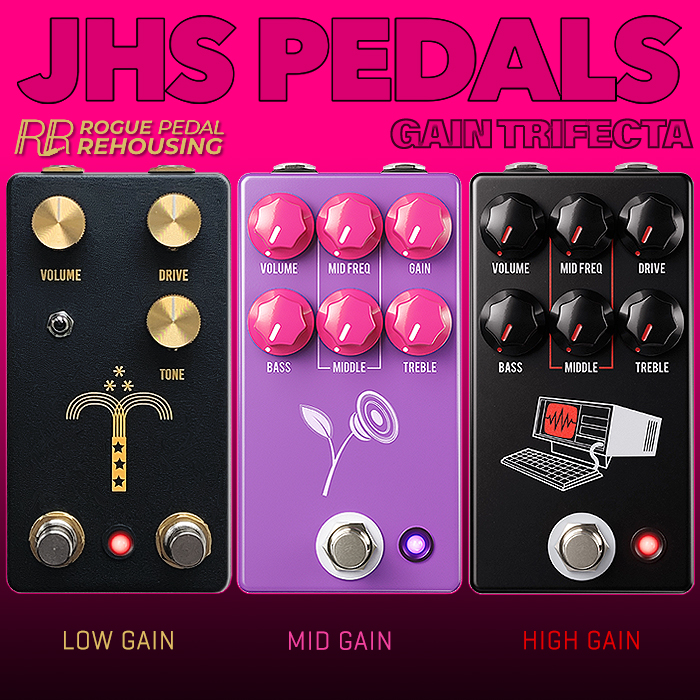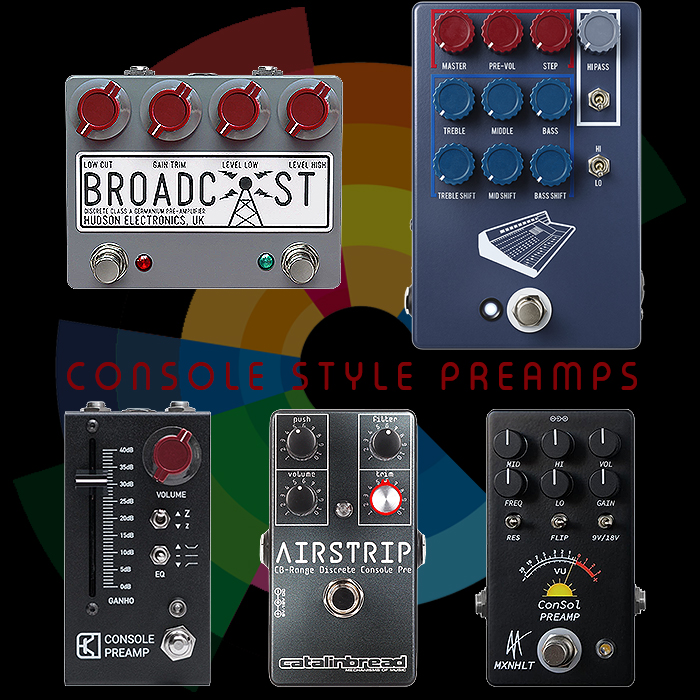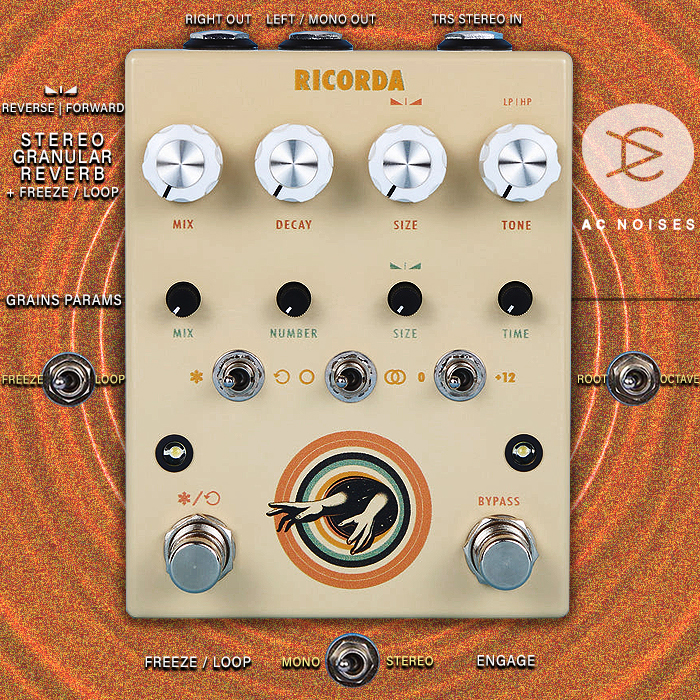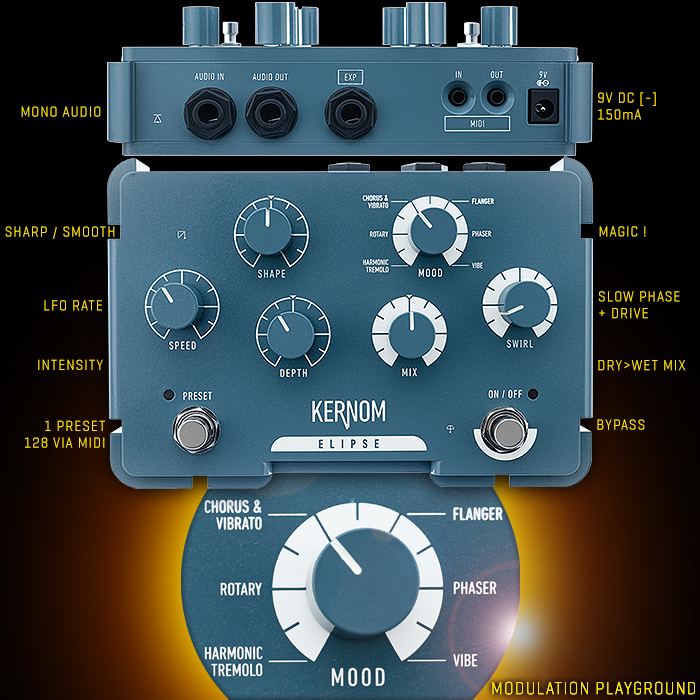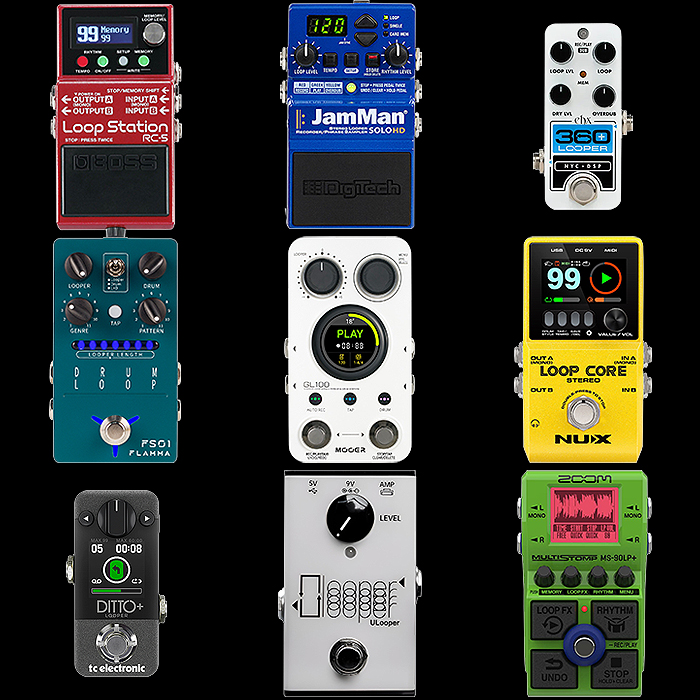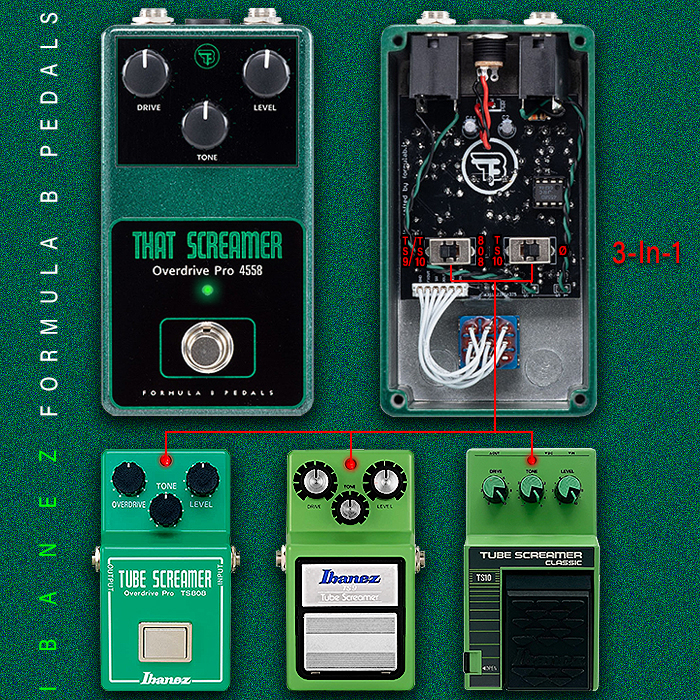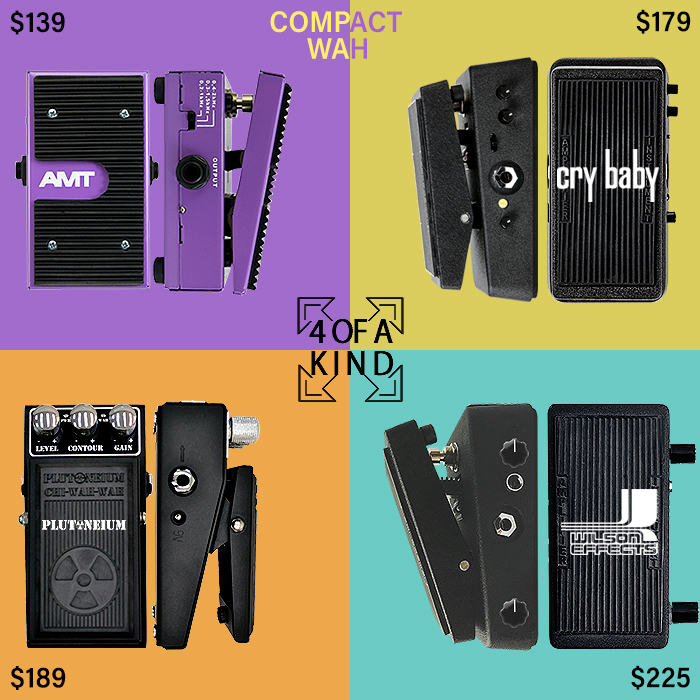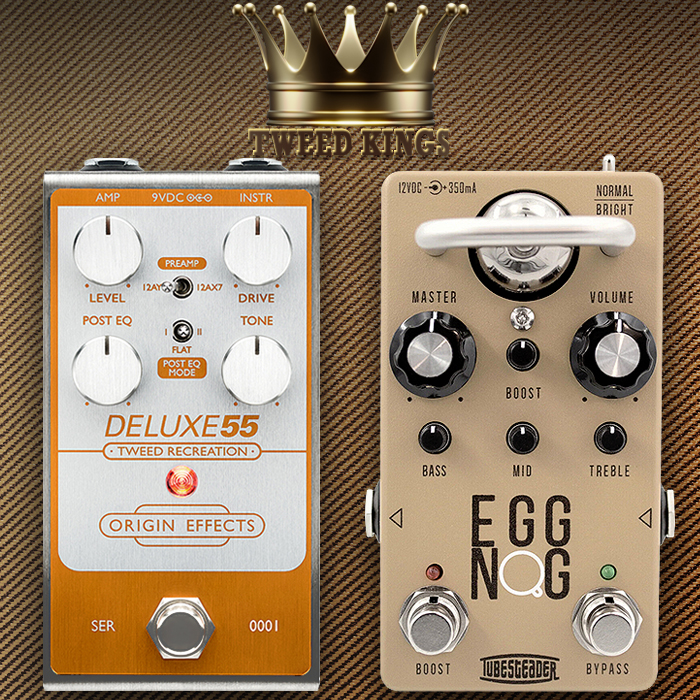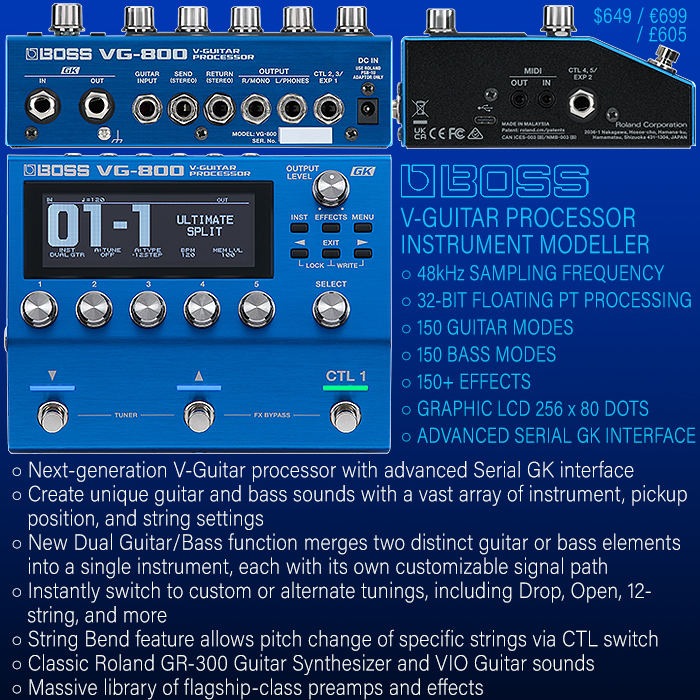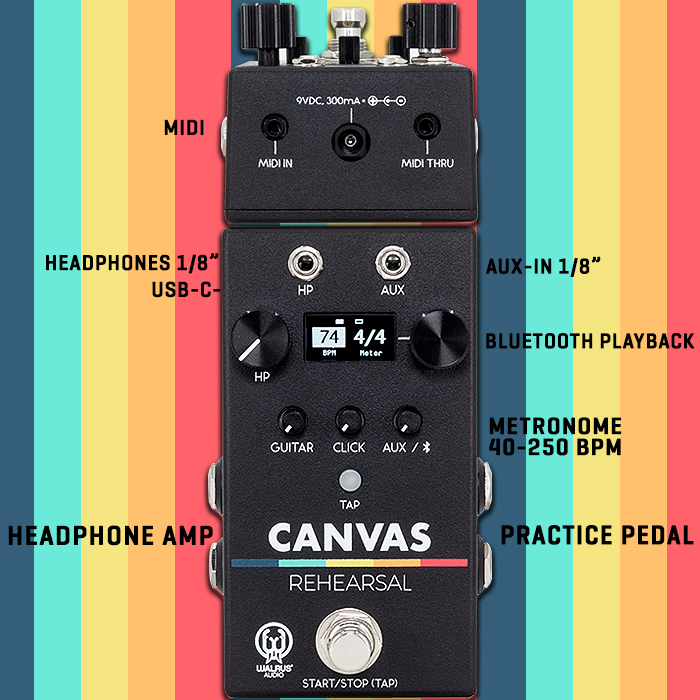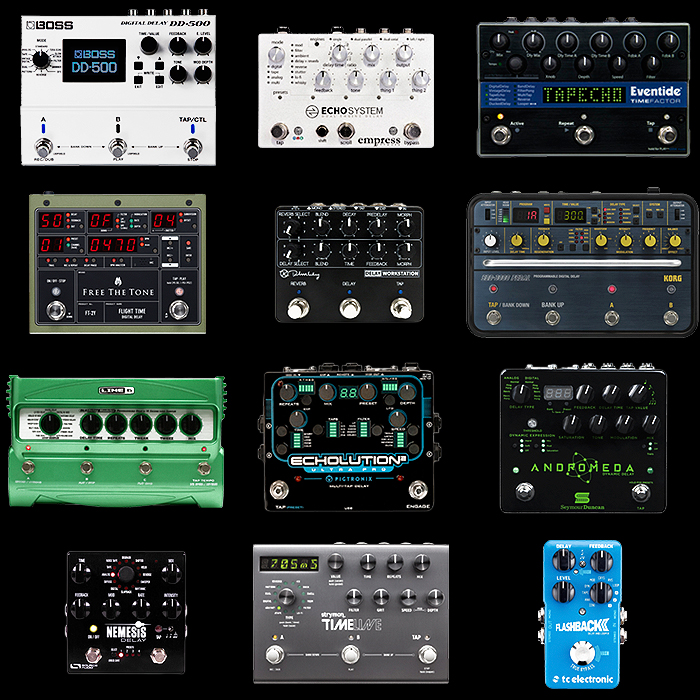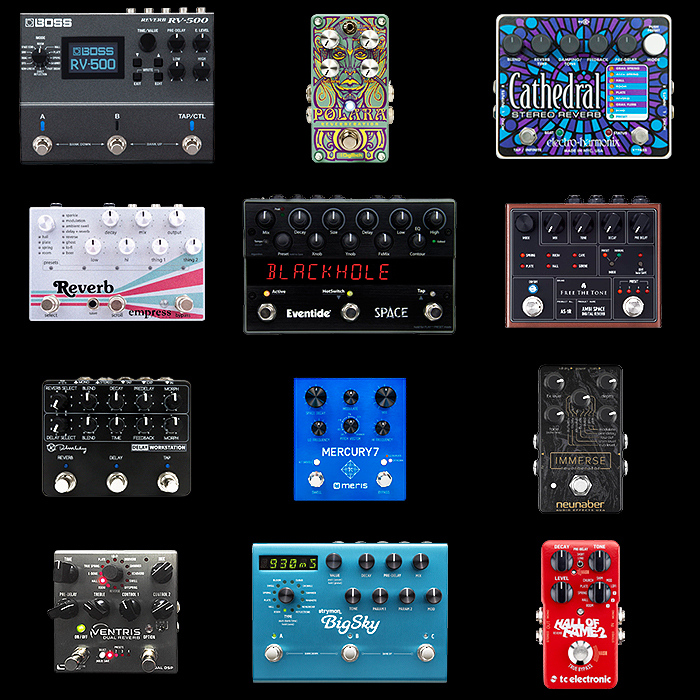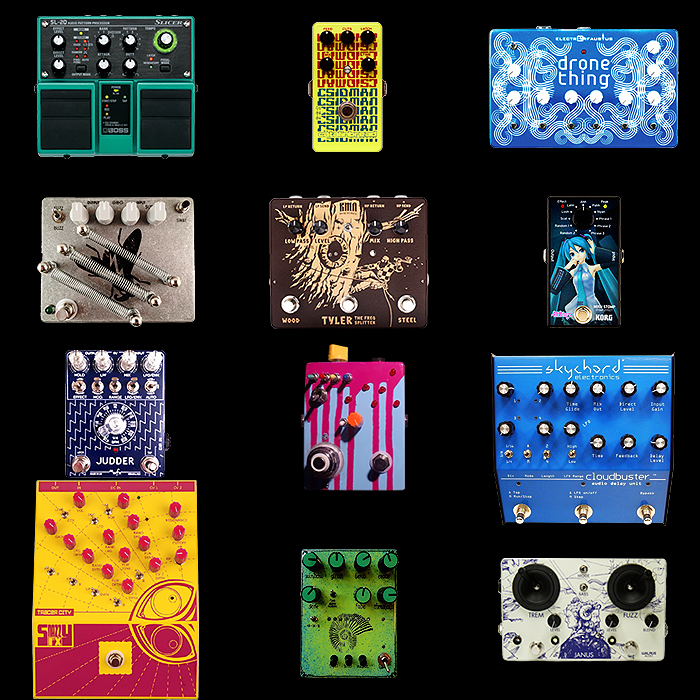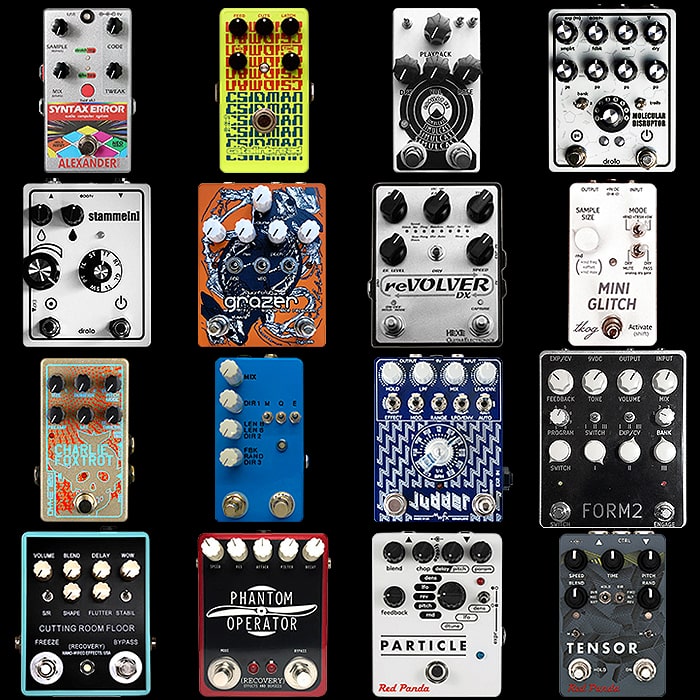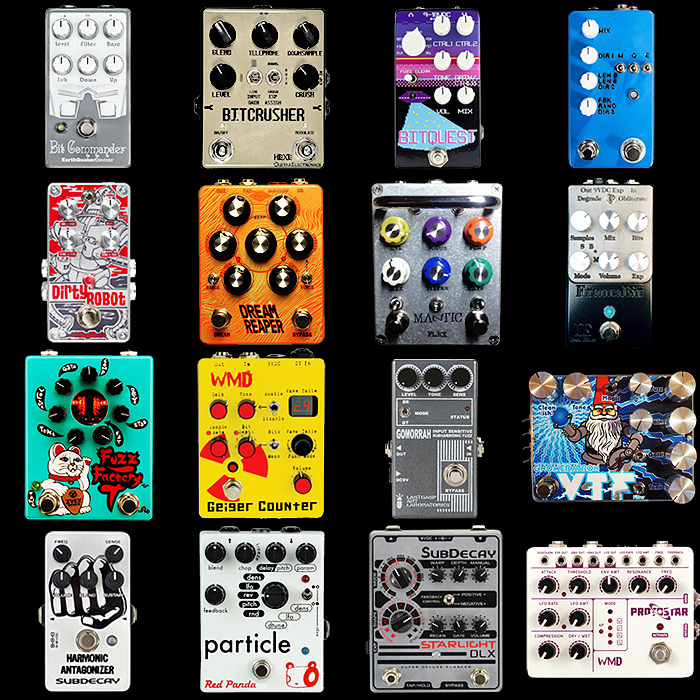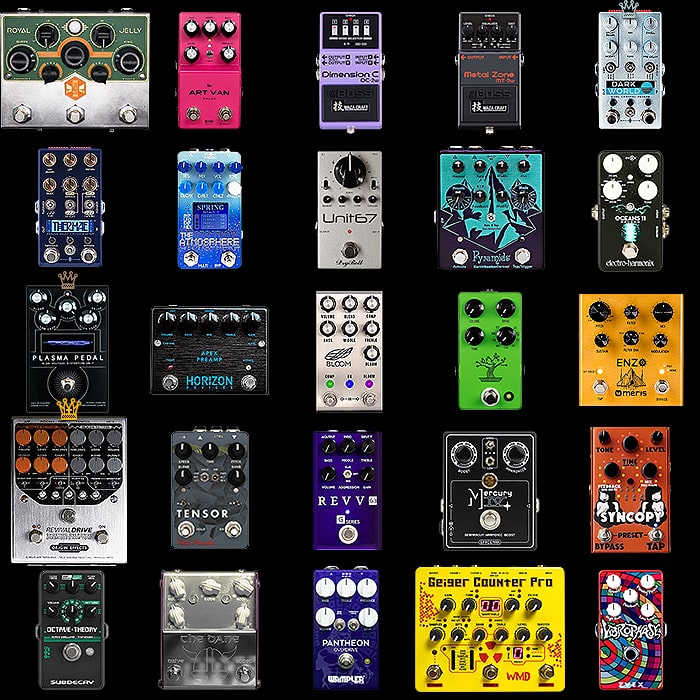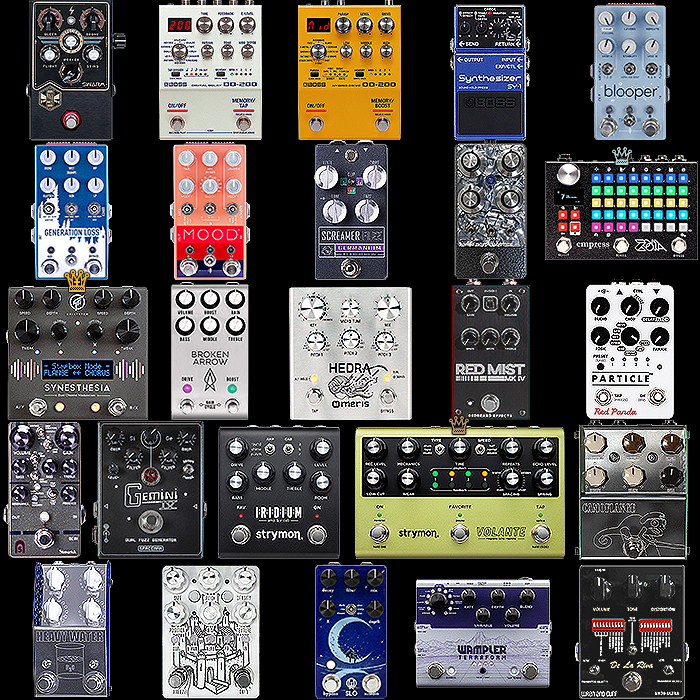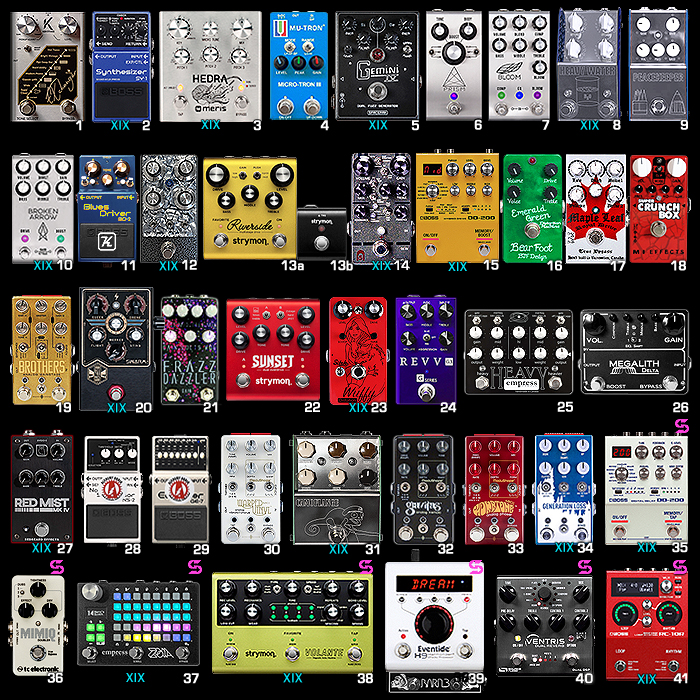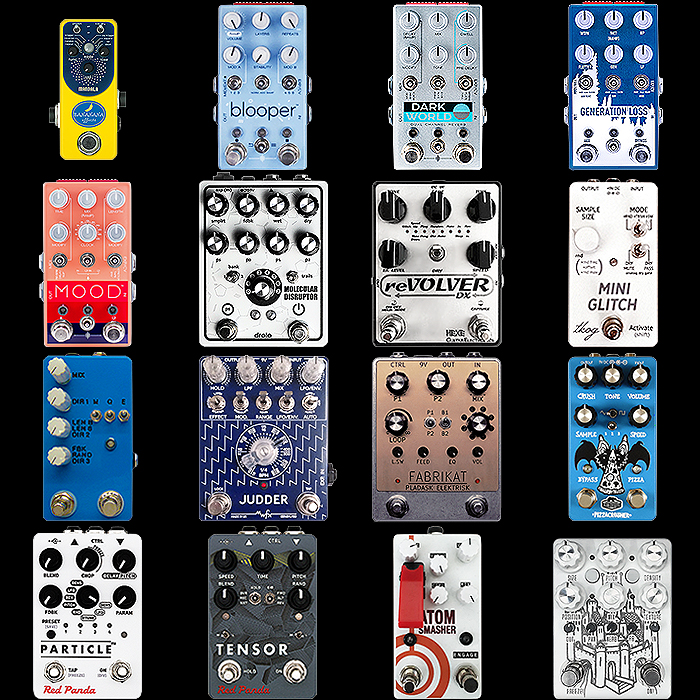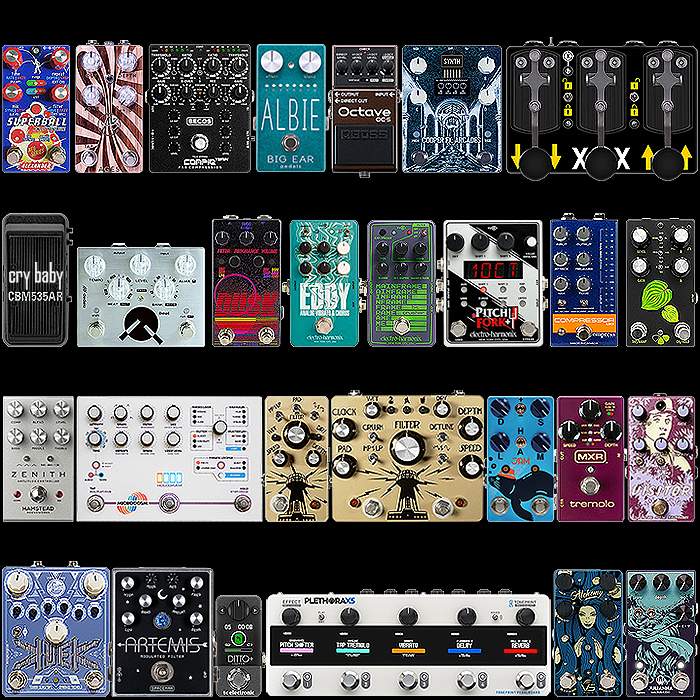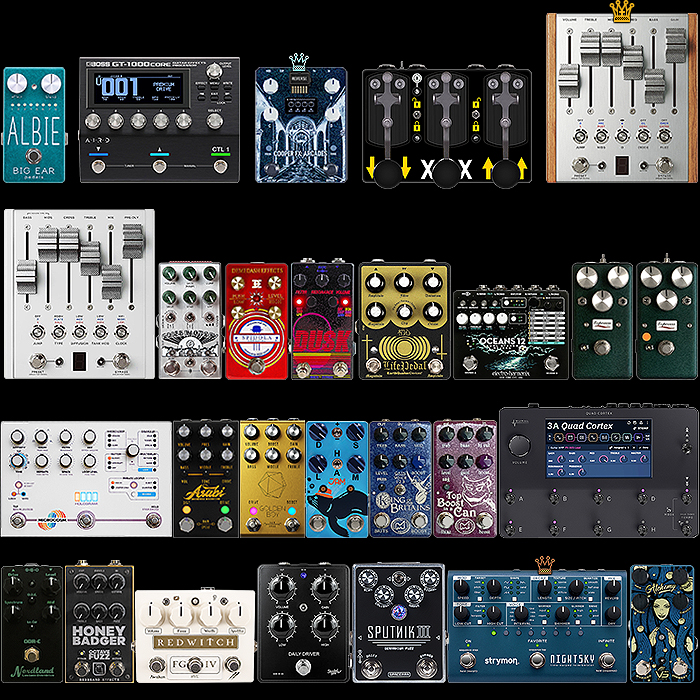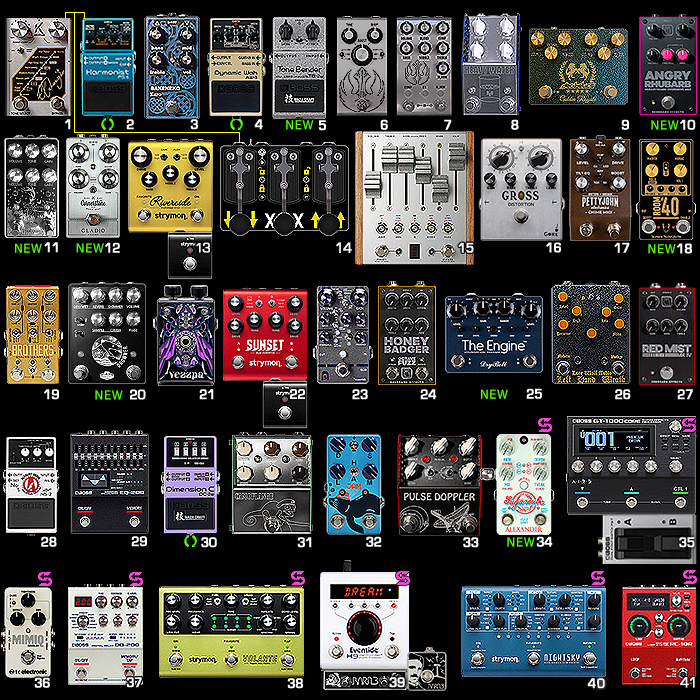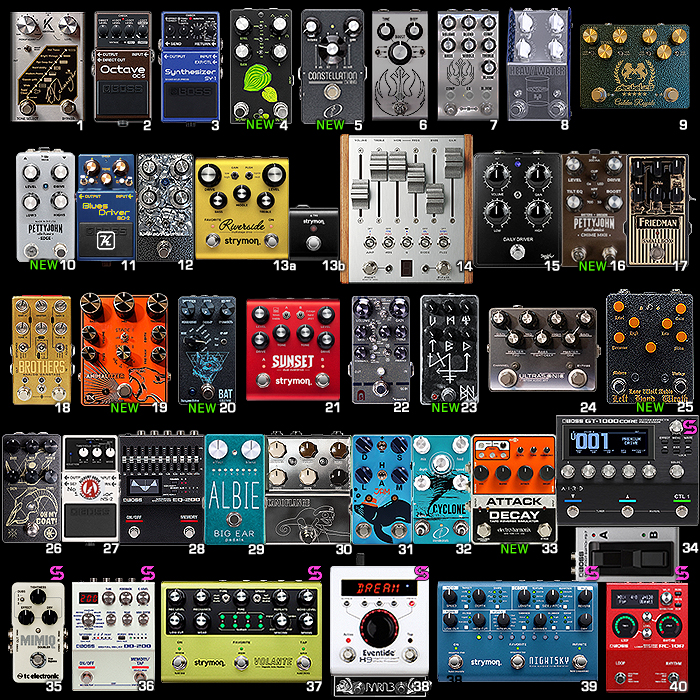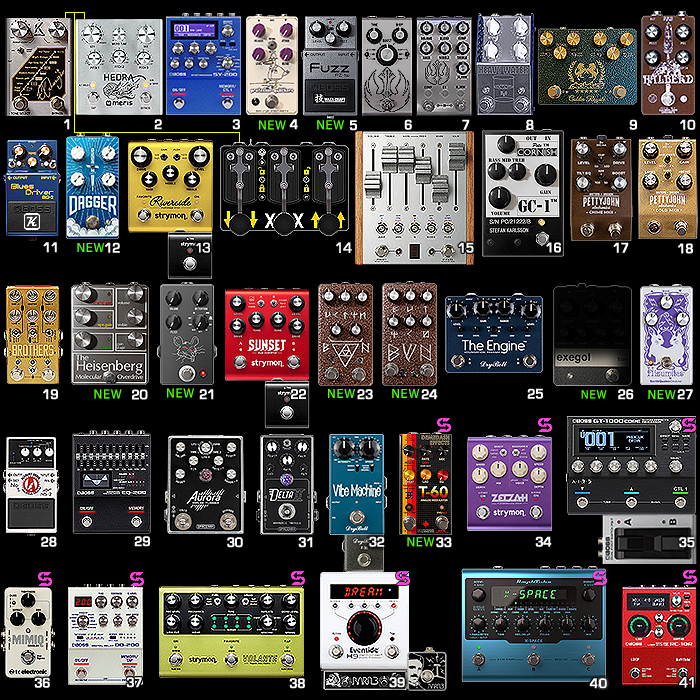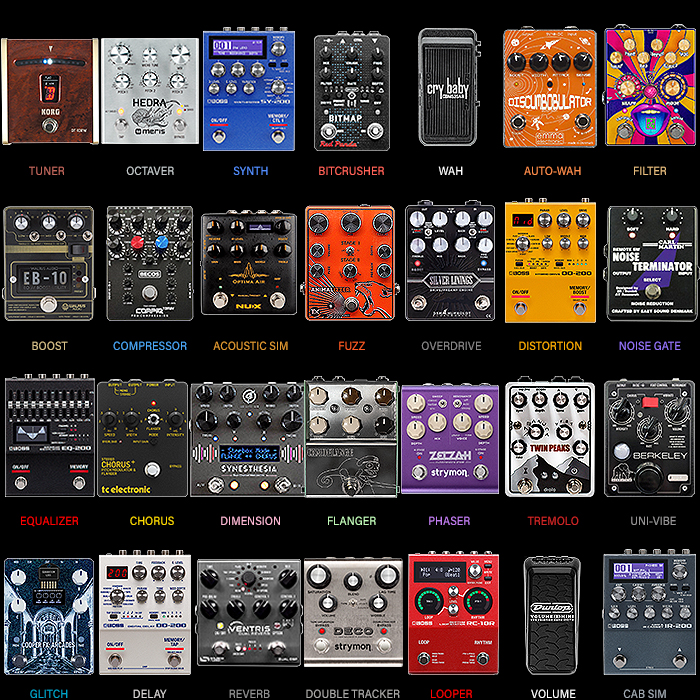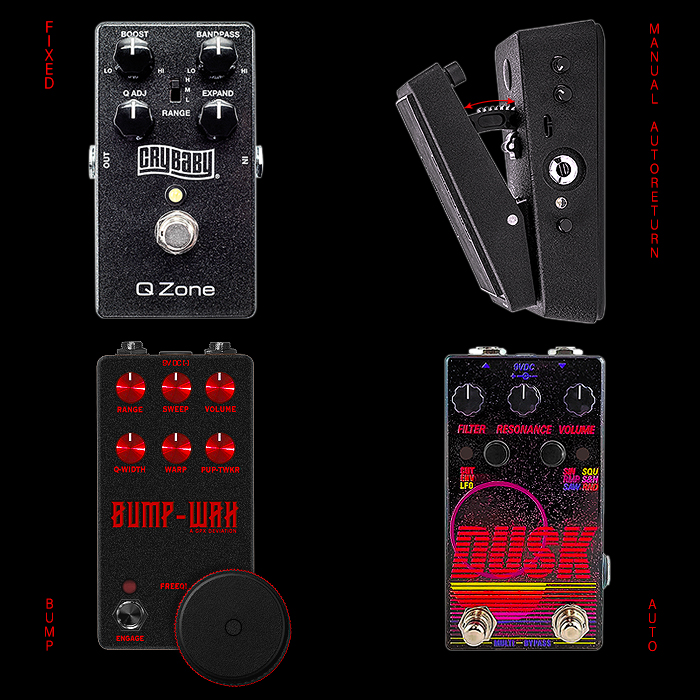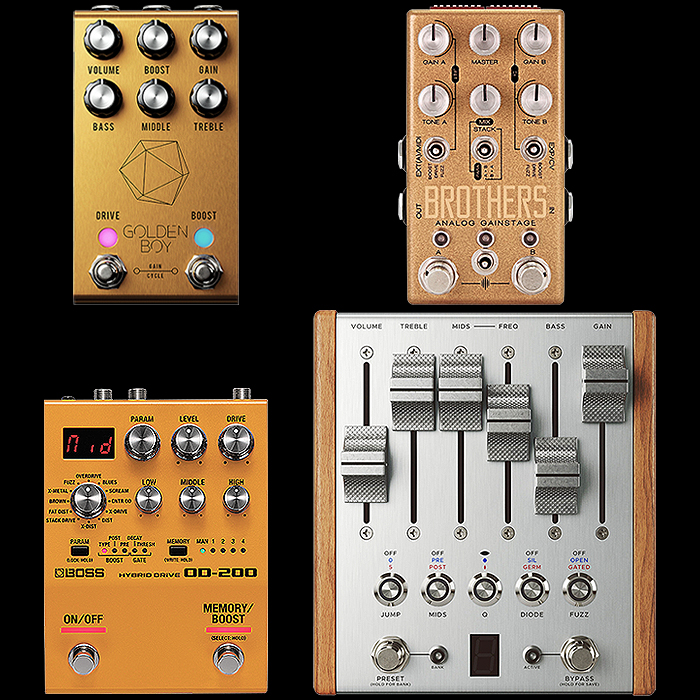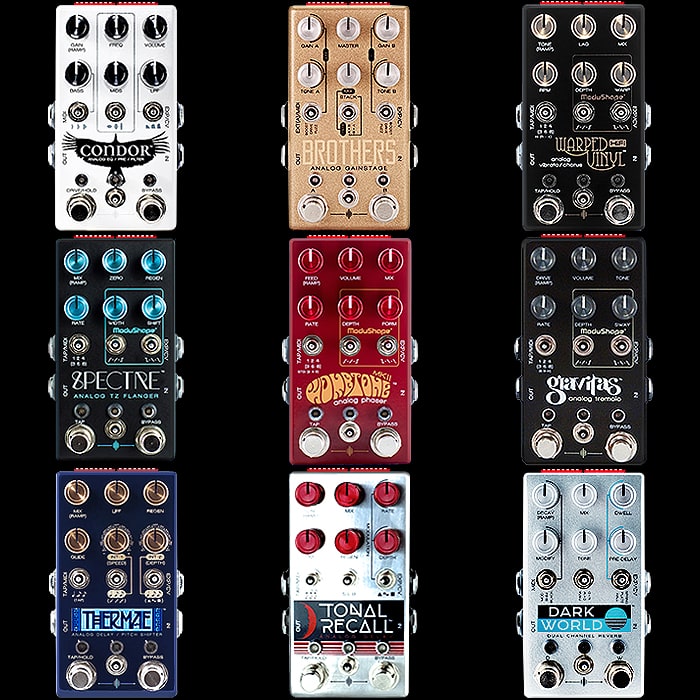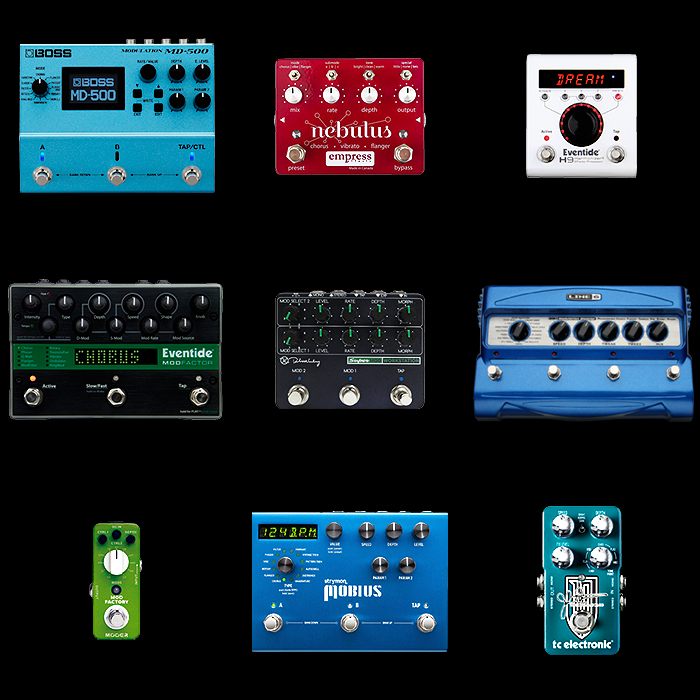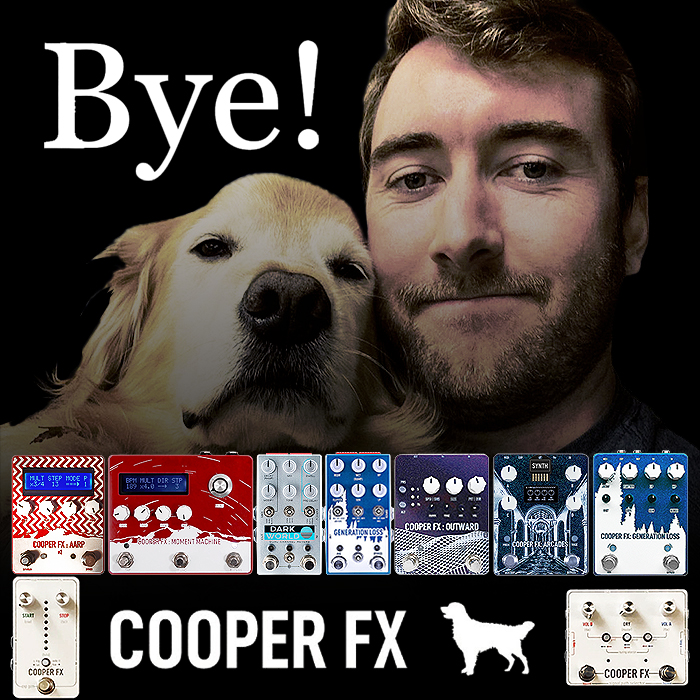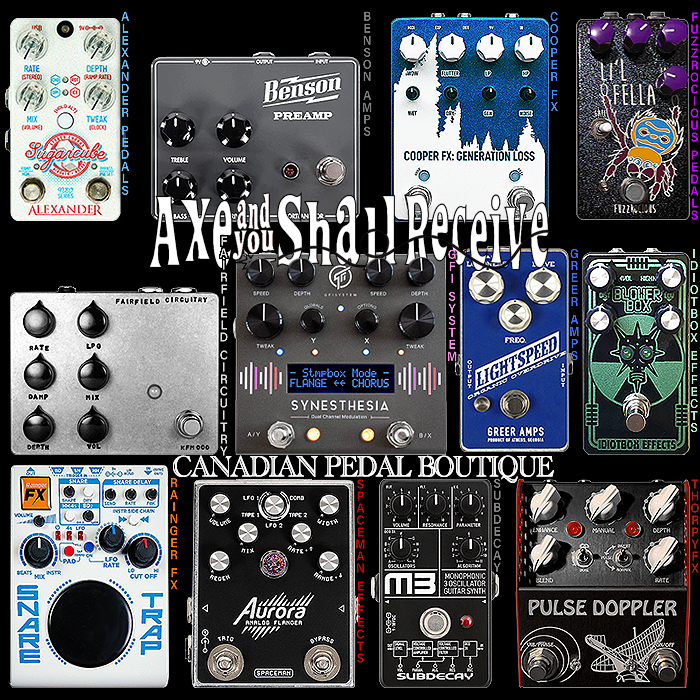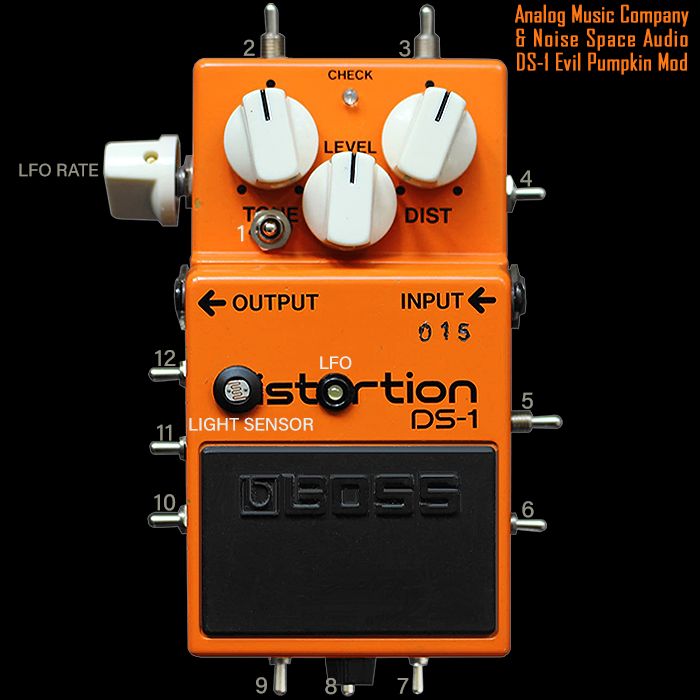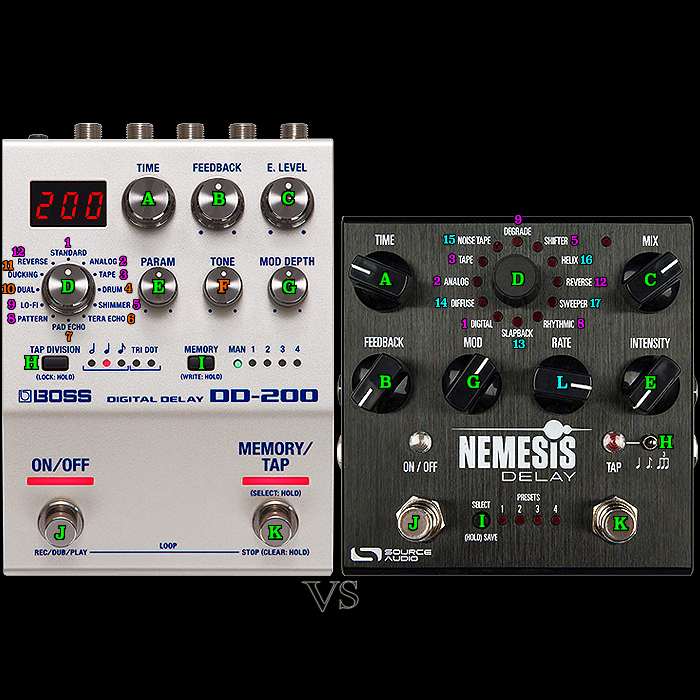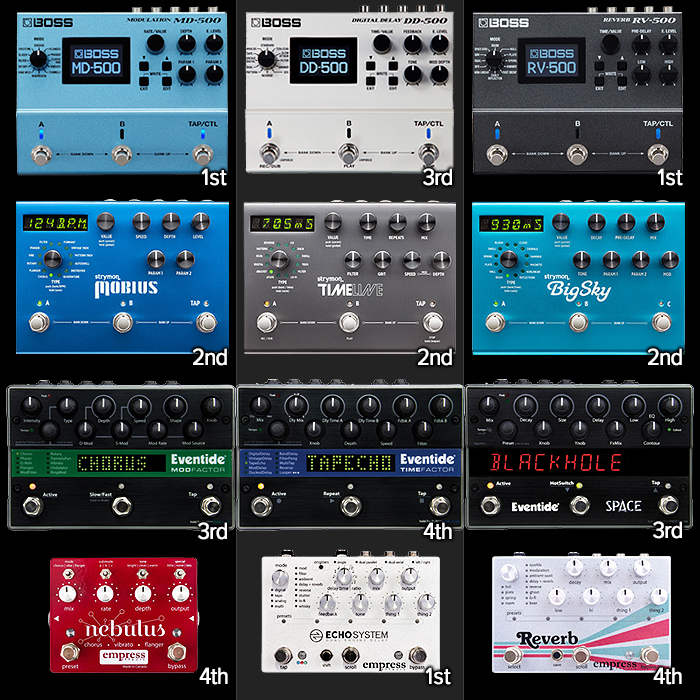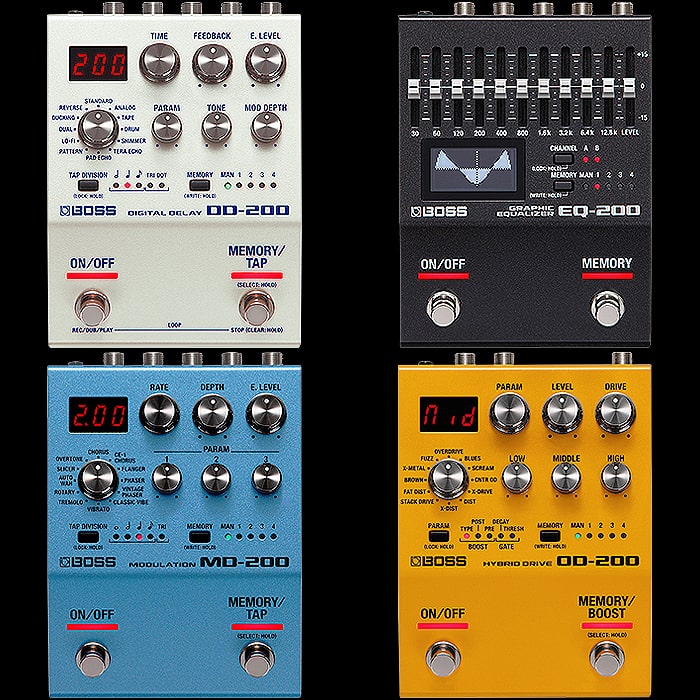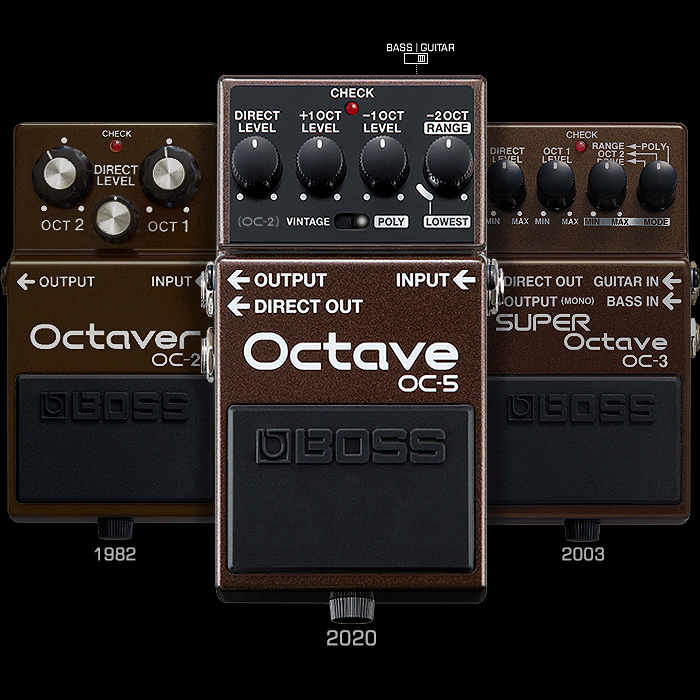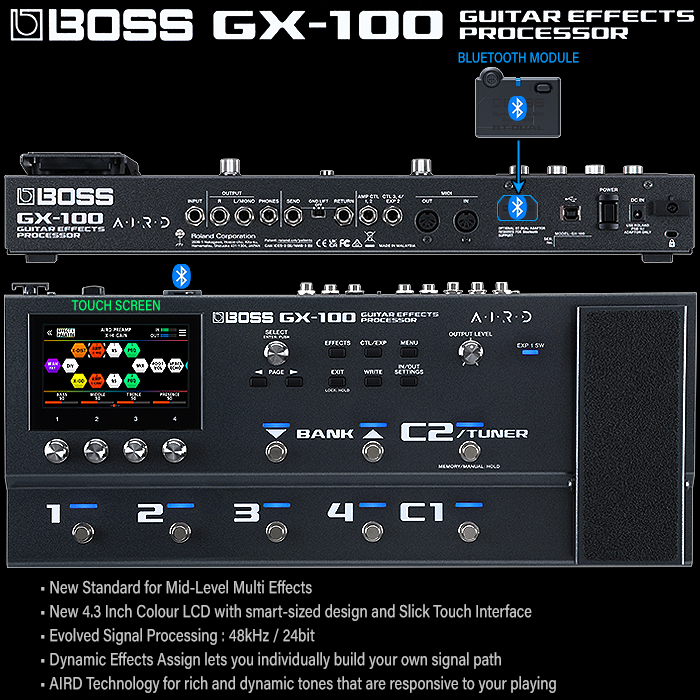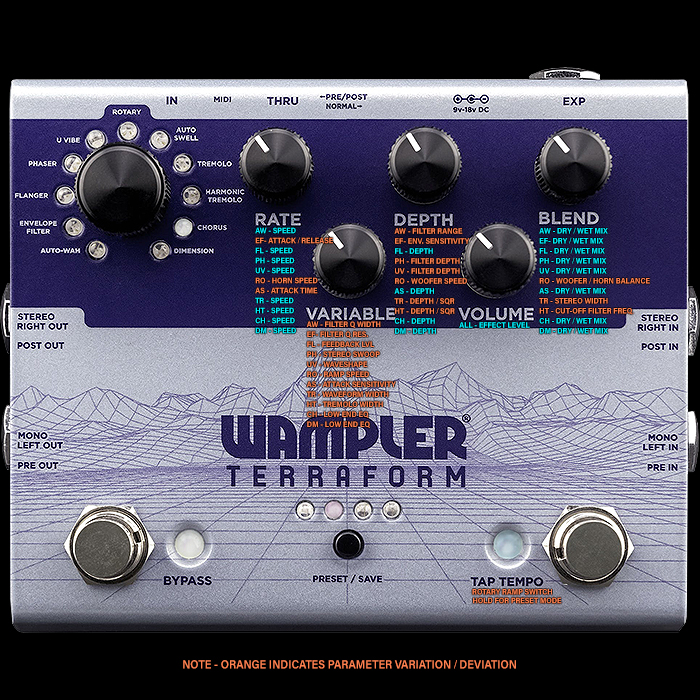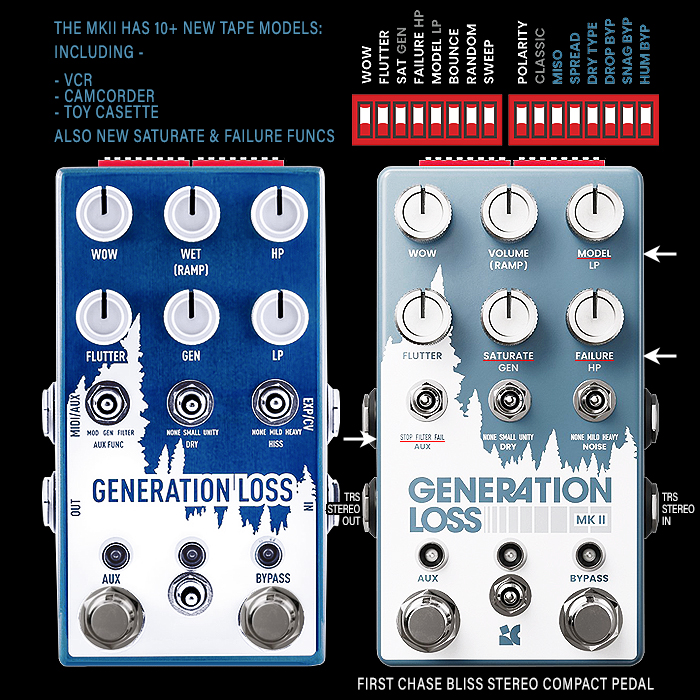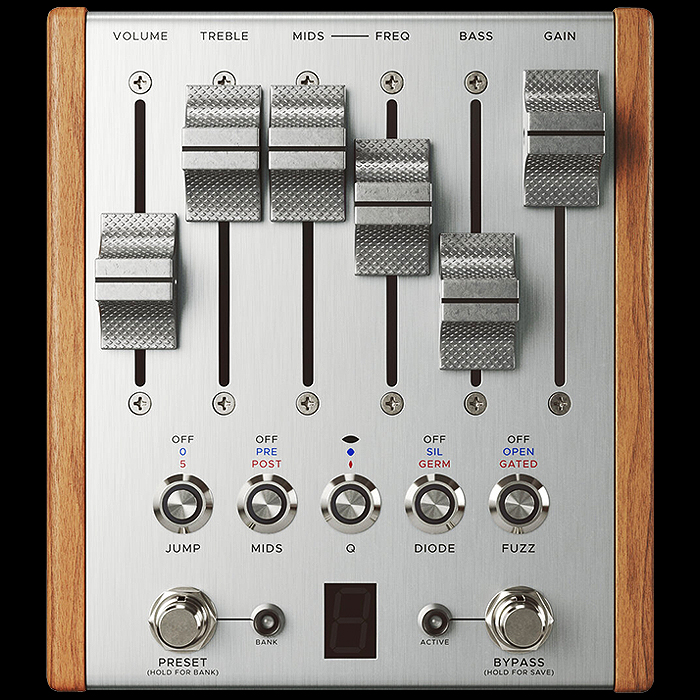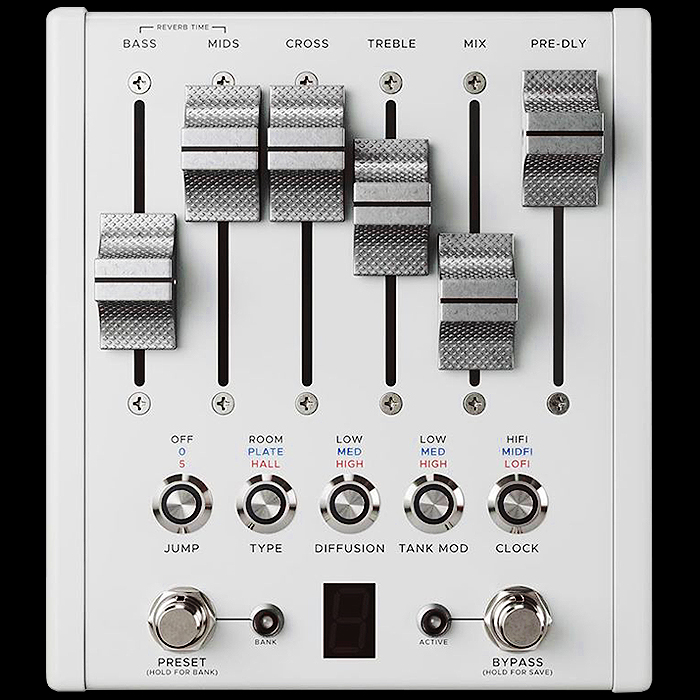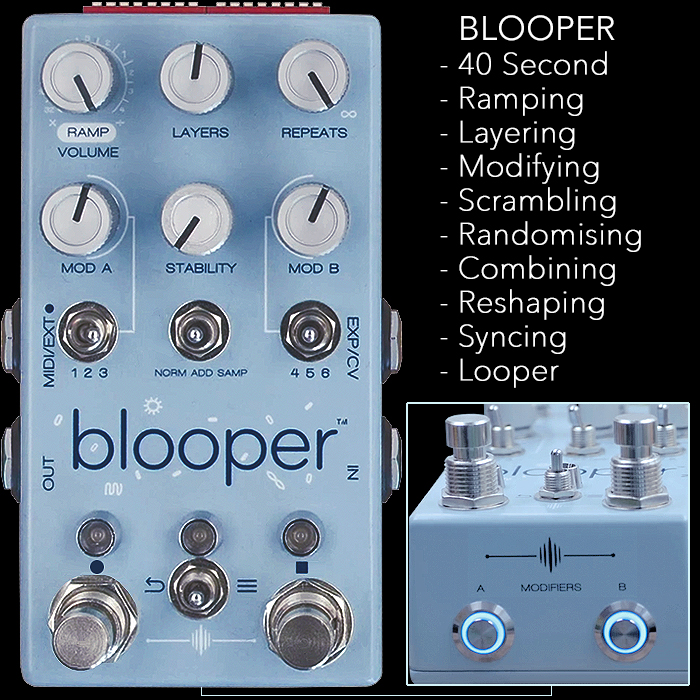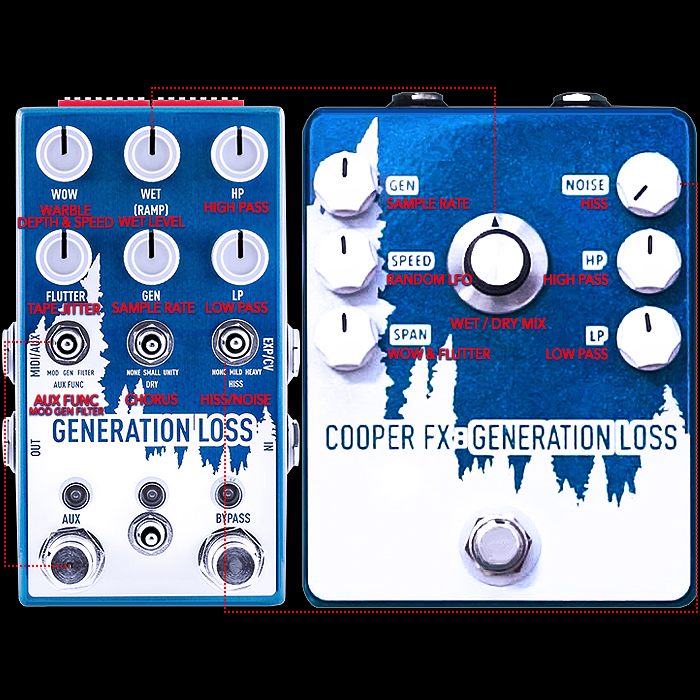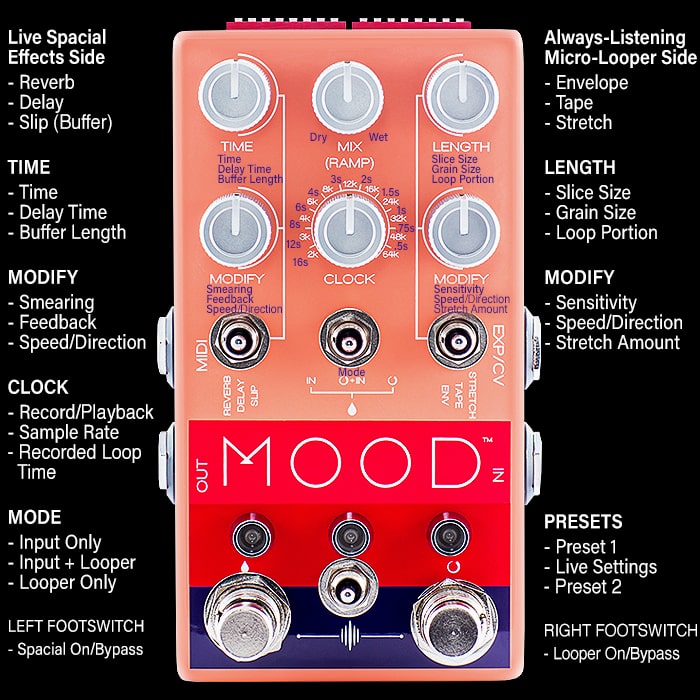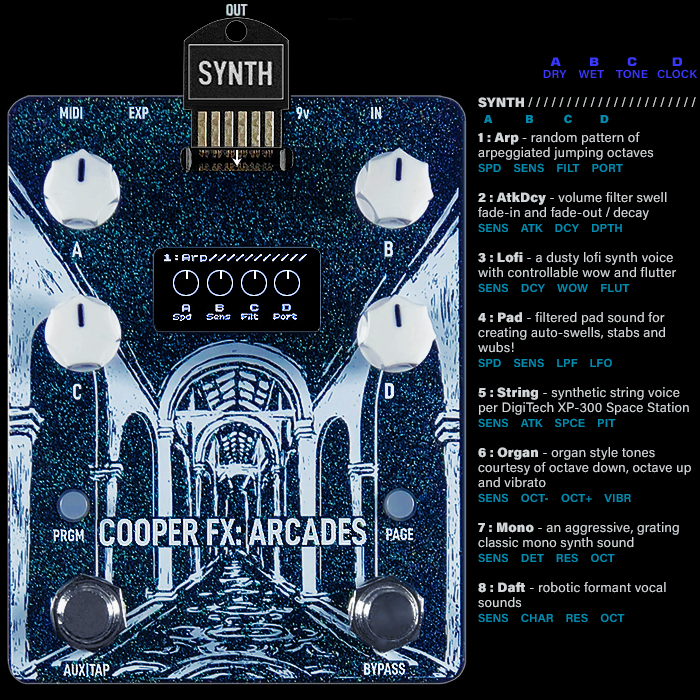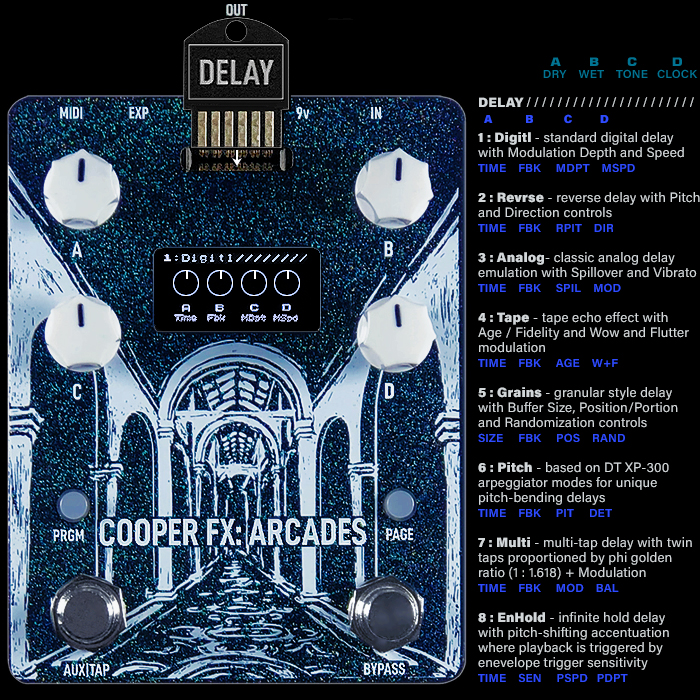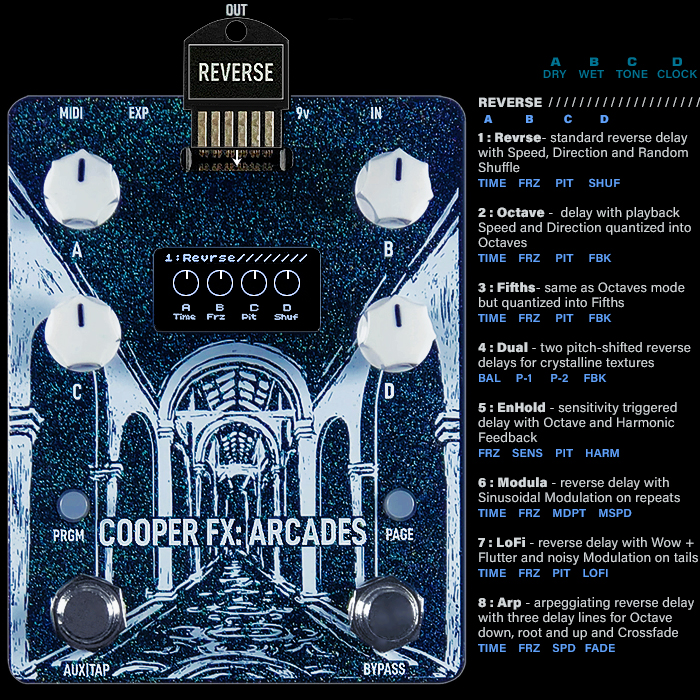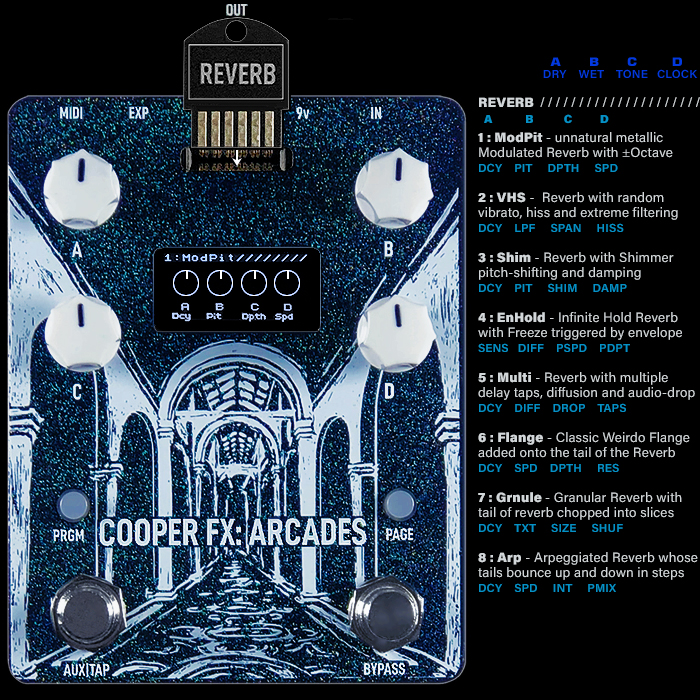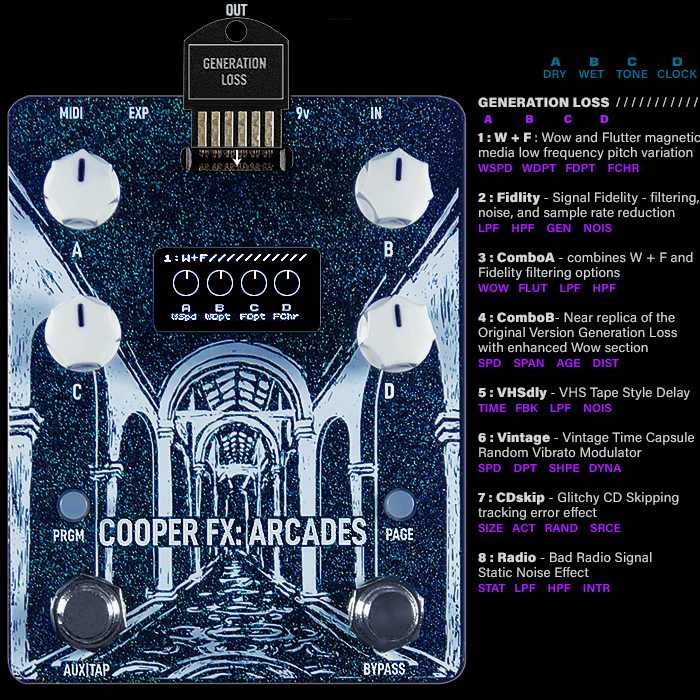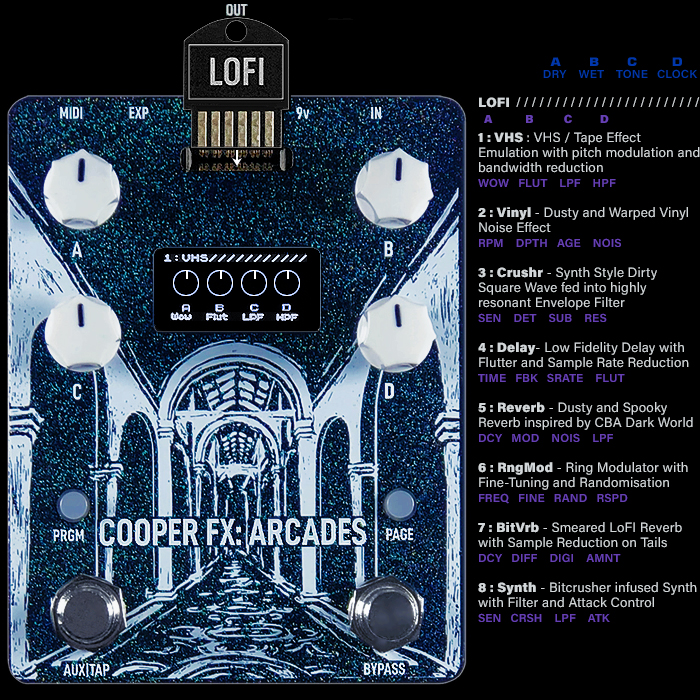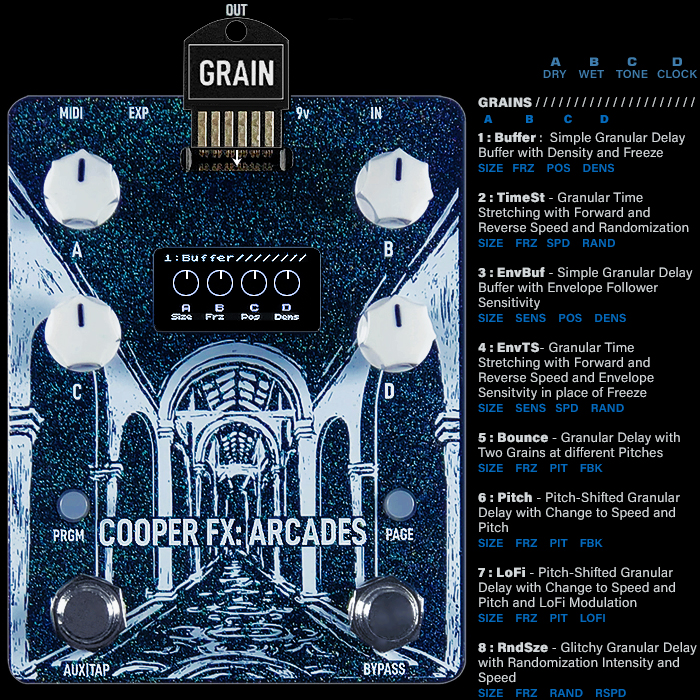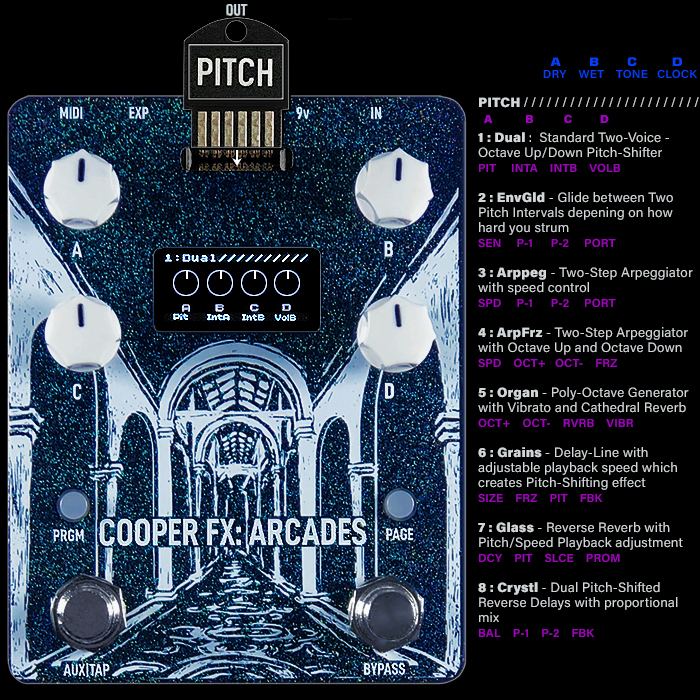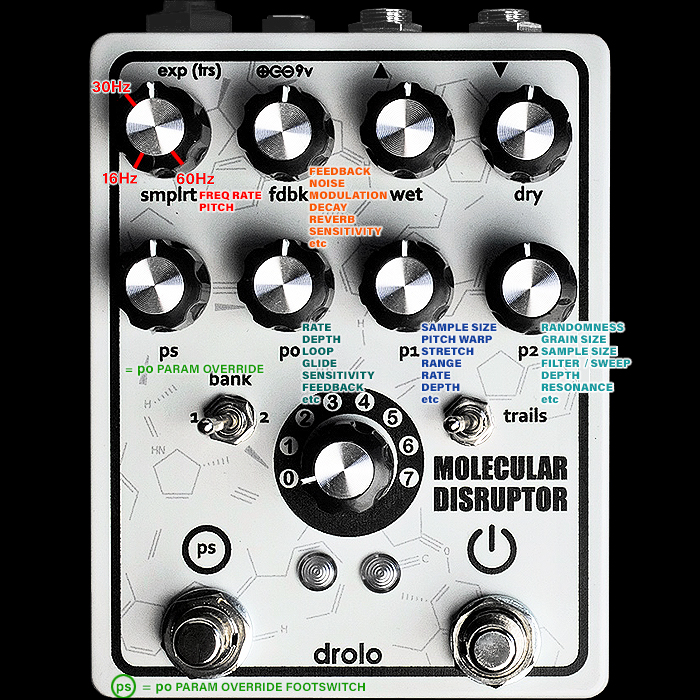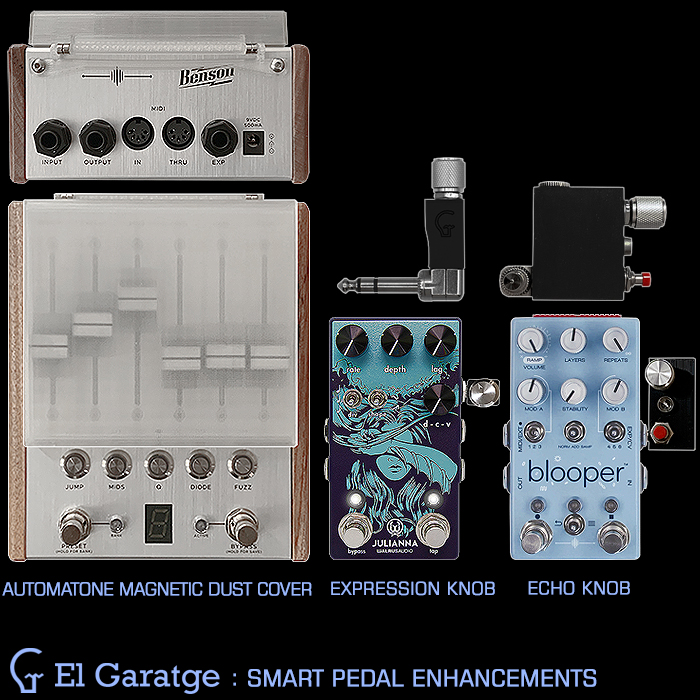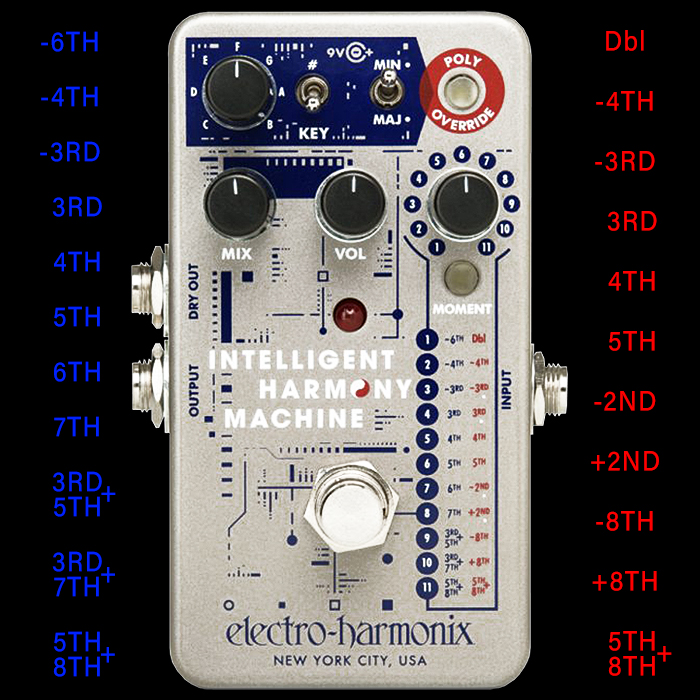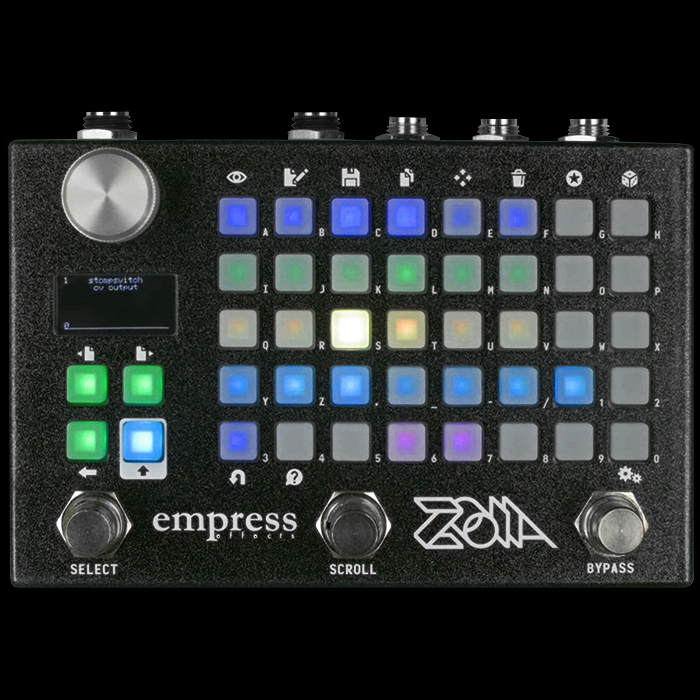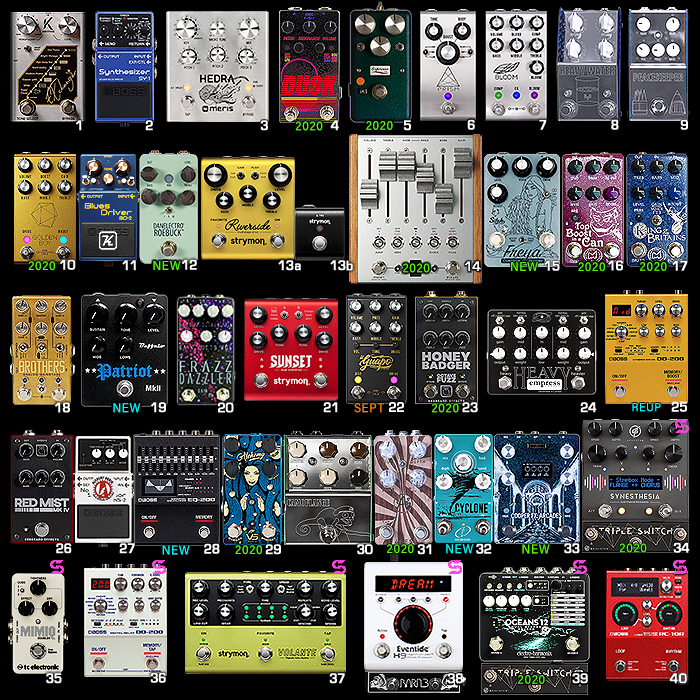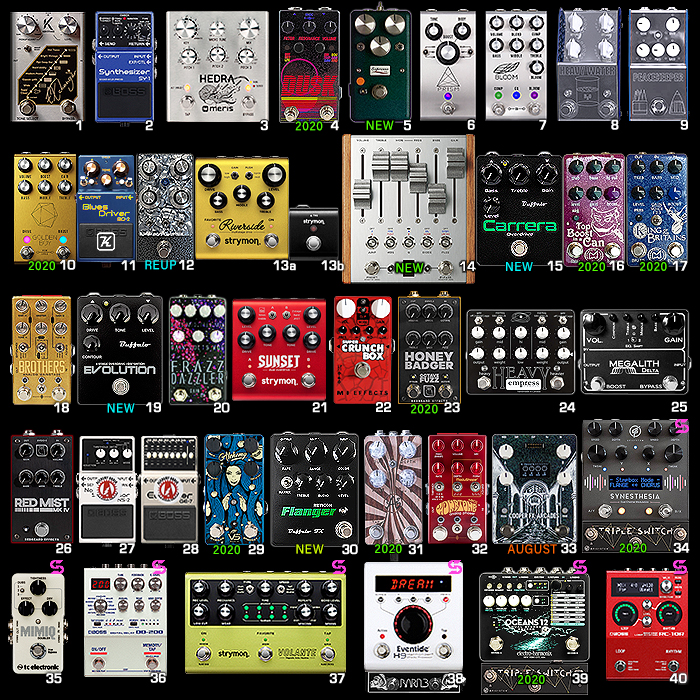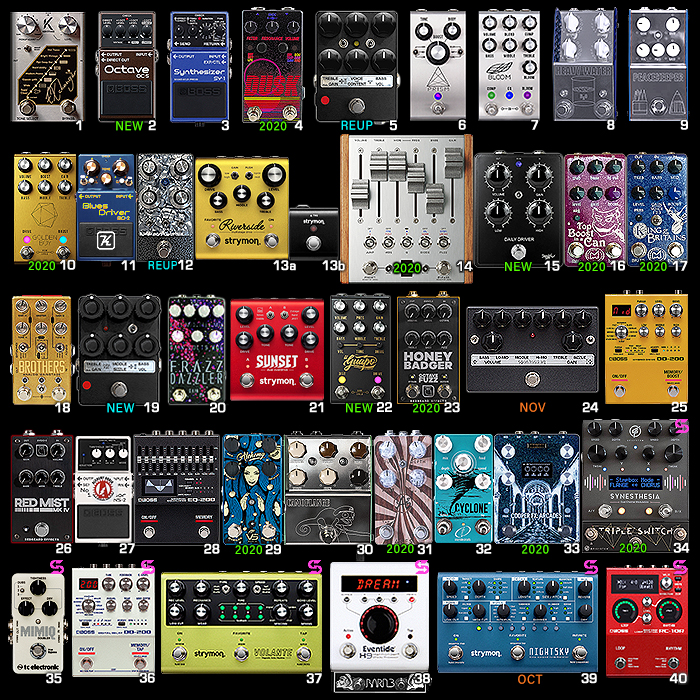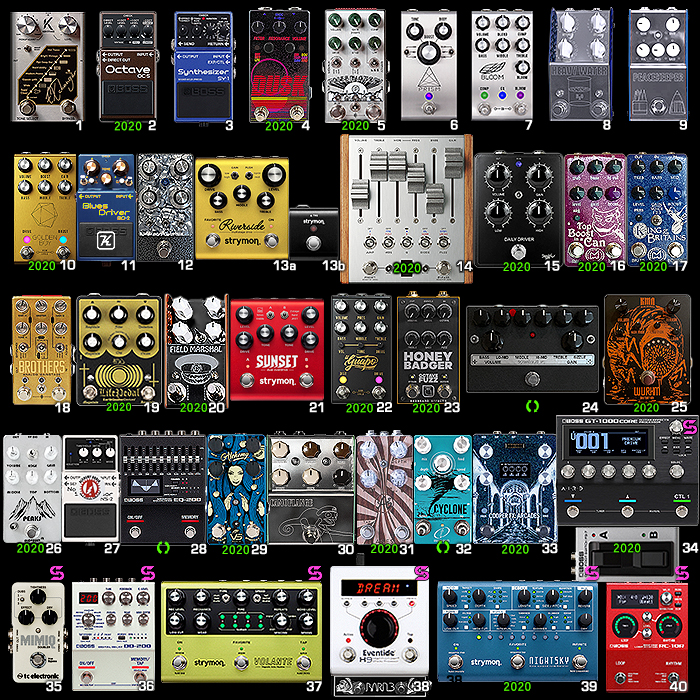Cooper FX Launches Next Phase of its Arcades Multi-FX Pedal with a major new batch of units and 4 Key New Modular Cards
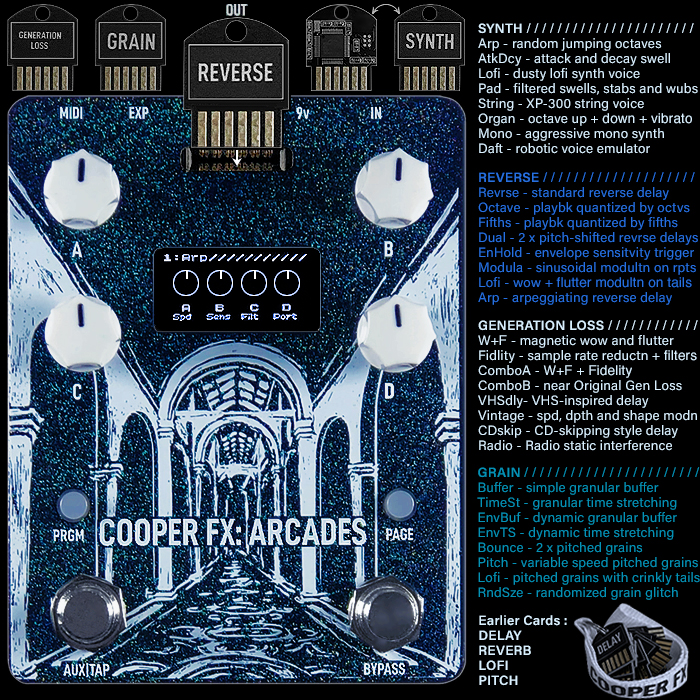
I will start by rightfully thanking Tom for allowing me to participate in this second launch phase and granting me all the access I needed to delve deep under the skin of his highly innovative pedal. If you read my original April 28th Arcades feature you will note that I was smitten by this formidable Multi-FX unit right from the first encounter. I had spent a very considerable chunk of 2019 getting stuck into a variety of glitch style effects and associated multi-fx pedals - including the Drolo Molecular Disruptor, MWFX Judder, Montreal Assembly CT5, Pladask Elektrisk Fabrikat, Red Panda Particle 2, Tomkat Cloudy, and of course the trio of Chase Bliss Audio pedals - Generation Loss, MOOD and Blooper.
Throughout those explorations I was conscious of the amount of time it was taking me to discover and dial in those sweet spots - often using a combination of as many as 10 different knobs - and then typically with no way to save those hard-earned settings for posterity - which often took hours to come by. Equally frustrating was the need to constantly refer to a manual - as several of the knobs had various different functions and parameters depending on algorithms employed. So I concluded at the end of 2019, that this format wasn’t going to become fully accessibly viable until someone sorted out the interface side - and provided a presets facility to preserve all those hard-to-come-by choice settings.
Just after this year’s one and only NAMM Show, Hologram Electronics announced its formidable Microcosm Multi-FX unit - which back then was the most mature and fully-developed of the sort of Glitch Effects / Multi-FX style pedals - with relatively clear interface, and 16 user-definable presets onboard. There was much I liked / in fact still do like about the Microcosm - but the unit wasn’t quite a perfect fit for me - and really rather larger than I was willing or able to accommodate in my existing pedal-chain.
So when the Arcades first made its rather surprising appearance around the end of April - it looked like Tom had finally cracked the formula. During various dialogues with Tom - he revealed to me that his Moment Machine Pitch-Shifter had been a major stepping-stone on the path to the Arcades, as the main interface very much evolved out of that particular project. To my delight this evolved format was spot on to what I was actively looking out for - a vertical-medium BB-size-enclosure with Dual Footswitches, Dual Push-Buttons which double as interface status LEDs - and then that ingenious VDU screen with accompanying legends and knob references - so you could see at all times what values you were tweaking and how.
The Arcades is a confluence of various key design and engineering innovations - the presence of onboard presets, the beautifully elegant interface and how everything is intuitively connected. Considering how broad and extended-range this device is - the inherent elegance and simplicity at its core is what makes it all work as the most practically viable solution of its kind.
At the heart of the Arcades device sits the formidable Spin Semiconductor FV-1 ASIC Chip - originally devised and released by Keith Barr in 2006 as the then ultimate chip for Digital Reverb, based on Keith’s earlier work at MXR and Alesis in particular. While originally conceived as the ultimate Reverb chip - the SpinASM programming language / command set is so extensive that you can pretty much programme it to do any type of effect - as has indeed happened - and Tom has taken it to places few others have come close to. The FV-1 sits at the core of most of today’s more experimental and far-ranging effects boxes - and has found its way into most of the pedals I spent so much time with in 2019.
Yet there is a core limitation with how many effects the FV-1 can handle at once - ’8’ hence pedals have typically come with several ’banks’ of flash memory / memory controller chips - typically 2 or 3 in combination per the Molecular Disruptor, Fabrikat and Form 2. Wherever you see a contemporary effects unit with multiples of 8 effects - there is every probability that it is running on an FV-1 chip.
To make the Arcades even more practically useful - Tom adopted the edge card connector methodology which has been in use since the early heyday of cartridge-based console gaming - since back in the early 80’s. This approach enables you to quickly and easily engage new banks of 8 algorithms - in the form of the modular cards you should be familiar with by now. Those cards are not altogether dissimilar to Tiptop Audio’s Z-DSP cartridge-based Modular-Synth DSP and Effects platform.
I briefly had some concerns about the nature of the cards’ open-face construction - but this is actually industry standard and has been proven robust and reliable for many years now. I thought I would need some better way to store and protect those cards - but the best means really is the included fabric keychain lanyard which comes with the pedal.
A Genuine Everyman Pedal with Universal Appeal
A number of my loyal readers have voiced that while they admire what this pedal can do and how it works - that this pedal is though somehow 'not for them'! I guess some are still labouring under the misapprehension that most of what this pedal delivers is those non-mainstream weird and wacky Granular Delay and Granular Synthesis style effects. And while the Arcades has a fair share of unique and unusual effects - they are all beautifully musical, and a large portion are a lot more mainstream than many people seem to be aware of.
A key advantage of this approach is that you yourself select for what purposes you are going to deploy this pedal - and choose the appropriate Modular Cards accordingly. Because of components supply issues at the time of the initial launch - Tom had to put in a restriction where you acquired each pedal with a choice of 2 card pairings - either Delay + Reverb or Lofi + Pitch. For the new phase those restrictions have been lifted - and you can now freely choose any 2 from the full set of 8 cards.
If we look at the Delay Card alone - we can see that there is only one genuinely 'Glitch' style effect really in that assortment - a Grains Granular Delay, while the others - Digital, Reverse, Analog, Tape, Pitch, Multi-Tap and Envelope Hold are all actually pretty mainstream - extremely high quality / high fidelity and not in the slightest bit weird or wacky. So I'm calling out all of those who didn't think this pedal was catering to their needs - to properly review and investigate exactly what is on offer. You can certainly go for the more mainstream effects cards - and just treat this as a very superior Multi-FX unit. For those of us who are more experimental- then there are obviously cards which better cater towards those needs too.
Once you get your hands on the Arcades - you quickly pick up on just how cleverly Tom has engineered this pedal - as using it is an effortless and elegant joy at all times. There are none of those frustrations I experienced with all the devices I worked my way through in 2019 - there is really no good reason not to dip your toes in these waters - I think a lot of players are going to be very pleasantly surprised by what they find here.
Despite all the real-world weirdness that keeps happening in 2020, there have been 2 genuine pedal revelations/revolutions out this year - The Chase Bliss Audio Automatone Preamp MKII - and this Cooper FX Arcades Multi-FX Unit. I encourage you to seek both out to witness that all the hype is entirely justified - and if these pedals are within your means - you should certainly be considering them at the very least. The end-of-year pedal awards are going to be a very hard-fought affair this time around.
Using The Arcades
I'm lucky to have an advance copy with the full set of 8 cards - which I wasted no time in hitching onto the provided key chain lanyard - and then you just 'rolodex' to the desired card and slot it (label-side forward) into the top aperture of the device - which is a tight and very precisely engineered slot - so apply some diligence here as there is some very slight degree of friction involved.
Once the card is in - the device loads up the 8 algorithms and corresponding presets on said card - you can quickly scroll and noodle through those 8 effects by just applying a short press to the PRGM button to page through each effect (which I've trained my big toe to do!). Upon card insert you will immediately see the 4 digital controls with references appear on the screen - parameters as appropriate to each algorithm - and always clearly labelled on the display. To access the 4 analog controls - Dry, Wet, Tone and Clock frequency - you quick-press the PAGE button.
Briefly holding the PRGM button will give you access to Configuration Settings - including the 8 Presets per card (Scroll to appropriate slot and hold down BYPASS footswitch to save - scroll and use AUX footswitch to select for playback). Holding the PAGE button will first give you access to Footswitch Assignment options, and then when you hold a second time you get access to Expression Assignment settings - before resolving back again to the Analog settings for the selected Algorithm. Note that you need to click off the analog settings - as if you press the PRGM it will move you on to the next algorithm/mode - something that confused me for about 20 seconds originally!
You can set the footswitches to various purposes - generally the BYPASS is the On/Off and Preset Save, while the Aux is Tap Tempo / Freeze/Hold / Max Oscillate etc. and Preset select when in Configuration mode.
My experience of this pedal has been just brilliantly intuitive since I first got my hands on it - and there are just 2 very minor things I would look to try and improve on in future iterations / editions. The VDU is clear and crisp and oh so useful, but it's a little bit smaller than is ideal as you cannot easily pick out those tiny legends/labels when fully stood up. I would also really like some footswitchable way to directly access and step through presets. Other than that this pedal is nigh perfect. The cards, algorithms and easy interface as just the perfect format for this sort of pedal.
I had a thought that perhaps the presets should / could be handled in a different way - such that you can save your favourite settings version of each algorithm - rather than having the presets as a wholly separate category. This would allow for easier paging through of your presets as such.
I also noted that very occasionally the knobs can glitch out and not be accurately reflected on the screen - but this happened very rarely - and always snaps back into place pretty quickly again. Regarding the relative positions of the knobs - this is definitely not a Boss-style pedal where everything is optimised to 12 o'clock - you will get very varied results on certain cards and algorithms with everything at noon - and a lot of those parameters are highly interactive - so with Synth parameters for instance you typically need to manipulate 2 or 3 of the knobs in tandem.
TOP TIP! - a few of the sweet-spots can be a little hard to come by - so I encourage you to get familiar with how the presets work as quickly as possible - as you are going to want to preserve those choice settings!
There is nothing quite like this pedal out there currently - it can do as much or as little as you desire and in this form factor and for these purposes there really is nothing more perfect.
The 4 New Cards and Algorithms
Tom gave us a preview of what was coming down the line during the initial launch. I did not necessarily expect the new cards to materialise quite so soon. So August 18th is a really doubly auspicious day for those who aren't already fully onboard the Arcades Express - to get settled in for the long-run - and try out some of the new cards.
The 4 new cards are exactly as promised, and in my visual I have arranged them per Tom's own preferences - where his current favourite Card is Synth, followed by Reverse. He also noted a preference for Synth : Arp, AtkDcy, String modes; Reverse : Lofi and Arp; Generation Loss : VHSdly; and Grain : RndSze mode.
I haven't had the pedal for quite long enough to be formulating solid preferences - but everything I've tried so far sounds great - while some algorithms do take a little longer to dial in and find those sweet spots - as per expectations really.
Here are further details for the 4 new Cards :
SYNTH Card
- Arp = random pattern of arpeggiated jumping octaves
- AtkDcy = volume filter swell fade-in and fade-out / decay
- Lofi = a dusty lofi synth voice with controllable wow and flutter
- Pad = filtered pad sound for creating auto-swells, stabs and wubs!
- String = synthetic string voice per DigiTech XP-300 Space Station
- Organ = organ style tones courtesy of octave up, octave down and vibrato
- Mono = an aggressive grating classic mono synth sound
- Daft = Robotic formant voice sounds
REVERSE Card
- Revrse = standard reverse delay with pitch / speed vectors
- Octave = reverse delay with playback speed and direction quantized into octaves
- Fifths = reverse delay with playback speed and direction quantized into fifths
- Dual = two pitch-shifted reverse delays
- EnHold = reverse delay with dynamic Envelope Hold trigger controlled by sensitivity vs freeze
- Modula = reverse delay with sinusoidal modulation on the repeats
- Lofi = reverse delay with loft-style wow and flutter and noise modulation on the tails
- Arp = arpeggiating reverse delay with three reverse delay lines
GENERATION LOSS Card
- W+F = focus on magnetic wow and flutter garbled tape effect
- Fidlity = focus on signal degradation via low and high pass filters and Generation sample rate reduction
- ComboA = combining the best of the W+F and Fidlity algorithms / patches
- ComboB = combination of parameters closest to original Generation Loss effect
- VHSdly = proper VHS-style inspired tape-delay
- Vintage = randomised vibrato modulator
- CDskip = CD-skipping type delay
- Radio = noise effect based on radio static interference type tones
GRAIN/s Card
- Buffer = simple granular buffer style delay
- TimeSt = granular time-stretching, wheree you manipulate speed and direction of playback, but not pitch
- EnvBuf = dynamic granular buffer style delay triggered by envelope detector
- EnvTS = dynamic time-stretching triggered by envelope detector
- Bounce = playback of two grains at different pitches
- Pitch = faster/slower pitch-shifted grain playback
- Lofi = pitch-shifted grains with crinkly modulation on the tails
- RndSze = glitchy grain-size randomizer
Final Thoughts
I've had the pedal for less than a week now - and for most of that the UK was suffering a Saharan heatwave (the most enduring one since 1961) - so I didn't get a lot of play-time until fairly recently. I was hoping to have more of a firm set of preferences as to favourite cards and algorithms by now - but I've really not lived with the pedal long enough to get to that level. I usually like to live with a pedal of this magnitude for a good month at least before I start spouting definitive preferences and recommendations.
All I can say is that the pedal works exactly as I expected it to - Tom has done a series of excellent guides - and I will be extrapolating and delineating further guidelines and recommendations from those as I review each of the Cards in individual follow-up articles. So following on from this post I will do a separate feature on each of the new cards, then each of the earlier ones - before doing a final concluding preferences and recommendations post for what I'm really liking long-term. This is likely to happen over the next few months - as all those articles will be interspersed with other regular features.
People who are put off by menu-driven devices should really have no fear here as this device is so straight-forward that it's nigh impossible to get lost as such - everything works as logically and intuitively and as connectedly as you would expect - it certainly did for me. I found getting around the pedal a breeze - while the occasional algorithm proved a little bit tricky to dial in - at least for the first few times.
These are great sounding and highly configurable effects with those 8 elegantly referenced parameters. Obviously there will be player preferences for each card and effects family as such - and this pedal overall gives you something quite different to say an Eventide H9 Max or Line 6 Helix Stomp. Both those devices are actually relatively complex to setup and manipulate - while with the Arcades you can do everything easily visibly and directly on the pedal - meaning is largely much quicker and simpler to deploy.
Everyone should be genuinely excited by the possibilities and potential of this device - as Tom has made so many smart design and engineering decisions along the way. The modular card approach just works really well here and keeps things simple and self-contained.
As I mentioned earlier - I feel the screen could be bigger, but understand from Tom that there are engineering trade-offs with every product design - and for this particular form-factor and execution - everything is as finely honed as it can be - possibly we might see some sort of clip-on magnifier in future for slightly easier visibility for when stood up. I've already noted that this is absolutely the perfect form factor for me for the function/s of the pedal.
I'm also one of those who likes maximum utility from my footswitches - having become very accustomed to the Jackson Audio way of Footswitch control - and indeed how the new Chase Bliss Audio Automatone Preamp MKII functions and the recent VS Audio Alchemy Chorus - where in particular its presets are a joy to employ. I feel that area of the Arcades could do with a little more work / iteration - but I totally understand that there are engineering limitations and trade-offs to be considered and those things may not be entirely viable.
This pedal is every bit as revolutionary as the Automatone Preamp - and deserves the same sort of accolades - while I'm still seeing a few too many of the more traditional players thinking that the Arcades is not necessarily aimed at them - while many of those same types have though already succumbed to the charms of the HX Stomp.
I say if you are looking for an intuitive and elegant Multi-FX unit that mixes up the best of mainstream and avant-garde effects - then the Arcades is absolutely the perfect candidate. After all you decide which of the Modular Cards suit you the best - and as I mentioned - the Delay Card for instance is pretty mainstream in particular.
Hopefully this article will have allayed some of the traditionalists' fears and concerns, and fired up the experimentalists to get more involved if they weren't already decided. The time is right - what are you waiting for!?
Pedals and cards are once again available on the Cooper FX Store - and will be coming through to dealers imminently.
Further Phase 2 Demos







